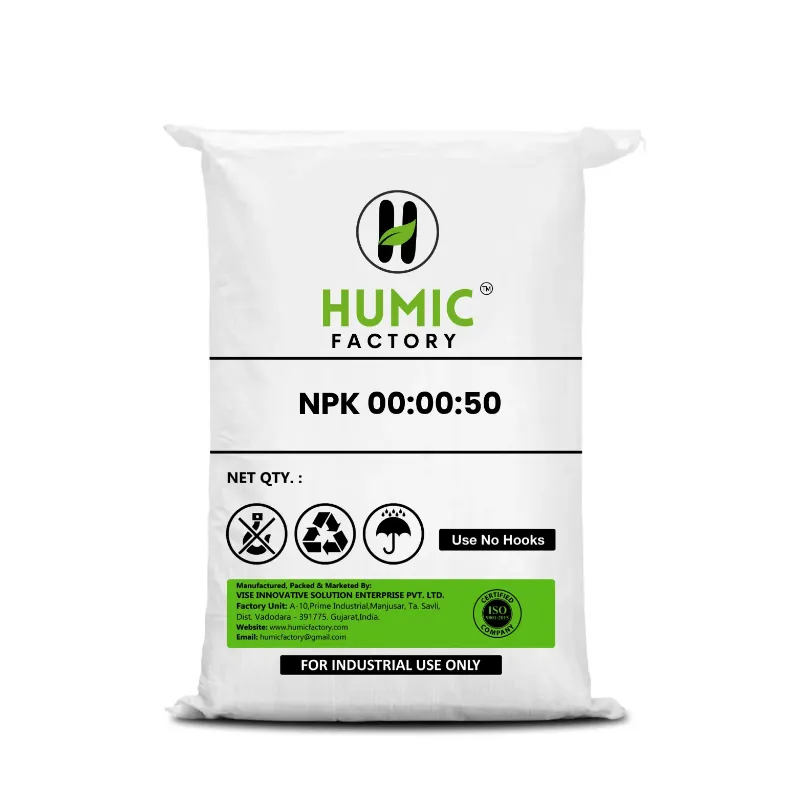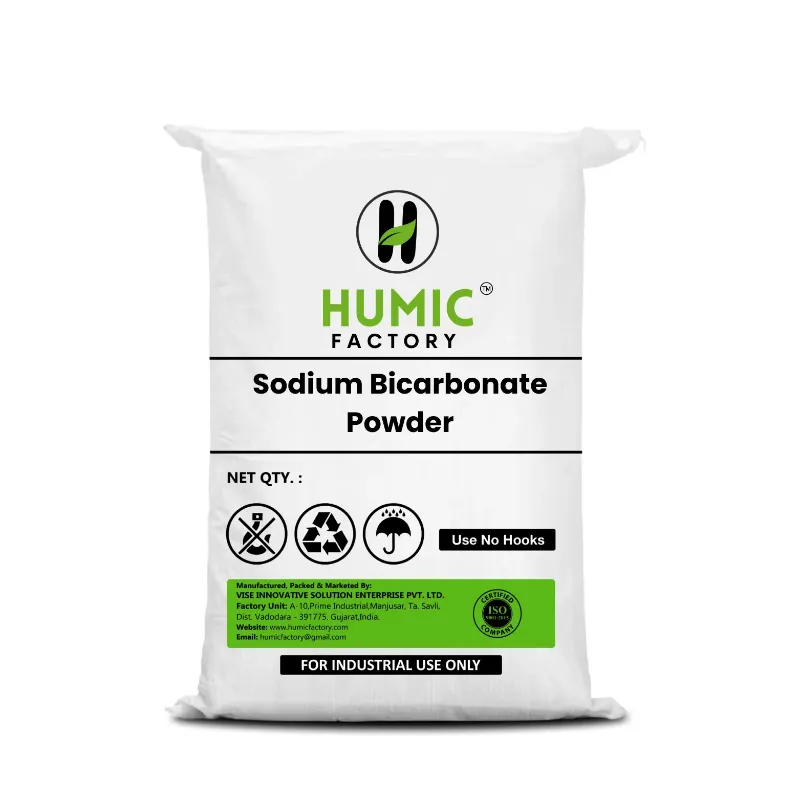Soil-borne diseases range from root rot, wilt to damping-off diseases, which can majorly affect crops, leaving farmers and gardeners looking for alternative options. Chemical pesticides have been in use for decades, and yet the environment and health costs keep on increasing. Trichoderma for plants: this is the natural eco-friendly fungus that brings all changes. Trichoderma for plants combats diseases, promotes plant health, and feeds the soil without the negatives of chemicals.
This blog discusses all the reasons why Trichoderma for plants is a sustainable alternative for pesticides while giving a few exciting high points and simple insights for you to develop flourishing crops. With Trichoderma for plants, you could protect your plants and the planet in 2025 and beyond.
Why Choose Trichoderma for Plants?
Chemical pesticides can eliminate pathogens, but they harm soil, water, and wildlife. For Trichoderma plants, however, it's a wise and green way out. Besides combating soil-borne diseases, this helpful fungus promotes plant and soil growth. Unlike pesticides, Trichoderma for plants does not leave toxic residues as it is safe for farmers, consumers, and ecosystems. In 2025, research proving its effectiveness against diseases like Fusarium and Pythium made it popular among organic growers and home gardeners.Here is the reason why Trichoderma for plants is the better solution:
Natural-Made Solution: Trichoderma for plants fight diseases without the use of chemicals.
- Eco-Friendly: Trichoderma for plants conserve soil and biodiversity.
- Safe for Humans: Trichoderma for plants does not move any health risks whatsoever.
- Cost Effective: Trichoderma for plants saves money on pesticide costs.
- Organic Certified: Trichoderma for plants suit all chemical-free agriculture.
- Soil Enhancer: Trichoderma for plants boosts soil fertility.
- Residue-Free: Trichoderma for plants leaves crops clean.
- Plant Booster: Trichoderma for plants promotes vigorous growth.
- Climate Smart: Trichoderma for plants supports sustainable practices.
- Farmer Safe: Trichoderma for plants eradicates pesticide exposure.
Mode of Action of Trichoderma on Plants
Trichoderma for plants works by outperforming pathogens in Mother Nature’s playbook. It does not just dump chemical toxins on crops—it uses biological warfare to protect plants. It colonizes roots, competes with harmful fungi, and produces enzymes that are lethal to these pathogens. Trichoderma for plants further induces the plant's own set of defensive responses, thereby conferring additional resilience on the plants.Trichoderma for plants is unique in its multi-faceted approach toward diseases like Rhizoctonia and Sclerotium, providing protection that is effective over a prolonged duration without harming the environment.
- Mycoparasitism: Trichoderma plant attacks pathogenic fungi.
- Antibiosis: These plant derivatives kill pathogens released by Trichoderma.
- Resource Competition: Trichoderma starves pathogens.
- Enzyme Power: Trichoderma breaks down pathogen walls.
- Root Shield: Protecting roots against diseases.
- Immunity Boost: Enhancing plant defense by Trichoderma.
- Nutrient Uptake: Trichoderma enhances nutrient uptake.
- Stress Tolerance: Trichoderma helps resist drought.
- Soil Detox: Trichoderma cleanses pesticide residues.
- Broad Protection: Trichoderma will target many diseases.
Problems with Chemical Pesticides
Chemical pesticides may seem to help plants in the short term, but their disadvantages are serious: they pollute rivers, kill beneficial insects such as bees, and degrade soil health while making other challenges for the farmer a long-term problem. Pesticides can interfere with health from skin rashes to cancer, and they are notorious for leaving residues on food that concern the consumer.Pesticides work against nature, whereas Trichoderma for plants is in tune with nature. Ecosystems are undermined in the process, leading to biodiversity losses and climate change problems. As global regulations become stricter, Trichoderma for plants is emerging as a safe and sustainable option.
- Soil Destruction: Pesticides harm the microbes; Trichoderma for plants fosters them.
- Waters Contamination: Pesticides contaminate rivers; Trichoderma for plants are clean.
- Threat to Wildlife: Pesticides kill pollinators; Trichoderma for plants itself remains safe.
- Health Hazards: Pesticides cause harm; Trichoderma for plants is non-toxic.
- Residues in Food: Pesticides persist on crops; Trichoderma for plants do not.
- Resistance to Pathogen: Pests develop resistance to pesticides; Trichoderma for plants continue to work.
- High Cost: Pesticides are expensive; Trichoderma for plants is economic.
- Ecosystem Destruction: Pesticides destroy biodiversity; Trichoderma for plants helps it.
- Regulatory Problems: Pesticides are facing bans; Trichoderma for plants is registered.
- Climate Concern: Pesticides raise emissions; Trichoderma for plants reduce them.
The Sustainable Advantage of Trichoderma on Plants
Sustainability is the future of agriculture, and Trichoderma for plants is at the forefront. Contrarily, chemical pesticides harm the environment, Trichoderma for plants blesses it through the enhancing of soil health, supporting biodiversity, and decreasing chemical dependence.
Farmers relate that crops treated with Trichoderma for plants become healthier with less expenditure, while gardens praise its safety and ease. Trichoderma for plants is synchronized with several global green initiatives, such as the European Green Deal, positioning it as a serious player in eco-friendly agricultural practices.
Hence, choosing Trichoderma for plants means investing in a healthier planet.
The Practical Deployment of Trichoderma for Plants
Trichoderma for Plants is as versatile as it gets, making applicability in agricultural systems a breeze. Whether working on a small farm or tending to a huge garden, Trichoderma adjusts to fit the needs. In addition to chemical pesticides, which require safety gear and strict schedules, Trichoderma is generally accepted as safe and easy to use.From seeds to soil drench, it provides infinite methods to influence the crop's natural protection against diseases.
Suggested applications of Trichoderma for plants:
- Seeds coated in Trichoderma for plants will be protected from the beginning.
- Drenching the soil with Trichoderma for plants for root protection.
- Spraying the leaves with Trichoderma for plants to prevent pathogens.
- Controlled environments are the best venues for Trichoderma for plants.
- Fieldwork: Trichoderma for plants protects crops such as wheat.
- In an orchard: Trichoderma for plants protects the roots of fruit trees.
- Vegetable Fields: Trichoderma for plants is good for tomatoes and carrots.
- Trichoderma for plants is for the backyard gardener.
- Compost accelerant: It enriches compost.
- Trichoderma for plants supports organic farming practices.
Advantage to Farmers and Gardeners
Trichoderma to plants strengthens farmers and gardeners with an effective, safe way of crop protection. Farmers save money in loss of pesticides while the gardeners benefit having more healthy plants without worrying the chemicals. Trichoderma to plants increases yield, improves soil quality, and responds to the consumers' demand for producing clean products. Whether flowers are grown for your patio or corn is produced for the market, Trichoderma for plants will render profits for both gardening and farming endeavors. Plus, Trichoderma for plants is easy to use, making it suitable for all skill levels.- Increased Yields: Trichoderma to plants increases crop productivity.
- Reduced Costs: Trichoderma for plants lowers pesticide expenditure.
- Organic Acceptance: In support of organic certification.
- Uncluttered Application: Trichoderma for plants is quite user-friendly.
- Client Assurance: Ensures chemical-free crops.
- Soil Stability: Maintains fertile land.
- Crop Variation: Perfect for fruits and veggies.
- Grower Safety: No health risks.
- Market Benefits: Marketed to eco-buyers.
- Improved Plant Strength: Increases resilience in crops.
Challenges of Chemical Pesticides
Problems of one sort or another have mushroomed under chemical pesticides. Pathogen resistance has forced increased strength in chemical application, which has further damaged the environment. Chemical health hazards range from respiratory ailments to chronic diseases, not to mention that the residues of chemicals make consumers wary.Whereas Trichoderma for plants supplements, those pesticides degrade soils and cut food chains. Trichoderma for plants is a really futuristic best possible solution to all these increased regulations and sustainable food consumption.
- Resistance Characteristic: Pathogens outsmart pesticides; Trichoderma stays effective.
- Health Hazards: Pesticides harm farmers; Trichoderma is safe.
- Soil Damage: Pesticides kill soil life; Trichoderma restores it.
- Consumer Care: Pesticide residues concern buyers; Trichoderma is clean.
- Regulatory Bans: Pesticides face restrictions; Trichoderma is unrestricted.
- Ecosystem Harm: Pesticides destroy nature; Trichoderma cares for it.
- Waste Pollution: Pesticide containers pollute; Trichoderma is low-waste.
- Quick Solution: Pesticides do not solve the root issues; Trichoderma does.
- Increasing Costs: Pesticides come at a high price; Trichoderma is handy.
- Climate Change: Pesticides harm the environment; Trichoderma helps it.
Conclusion
Sustainable, of course, because Trichoderma for plants is already in the frontline. Studies are being carried out to prove its efficacy in improving crop resilience, remediating soils, and minimizing chemical inputs. Use of Trichoderma for plants all over the world is being embraced by farmers and gardeners alike because of its low cost and efficiency.In the face of climatic resistances such as prolonged drought and extreme weather changes, Trichoderma for plants offers a resilient solution that ensures both food security and the health of the environment, while sustainable agriculture lays the foundation for a greener earth.
FAQs
1. What is Trichoderma for plants?
It’s a natural fungus that fights soil-borne diseases sustainably. Trichoderma for plants is eco-friendly.
2. How does Trichoderma for plants compare to pesticides?
Trichoderma for plants is safe and natural; pesticides are toxic and harmful.
3. Is Trichoderma for plants safe for humans?
Yes, Trichoderma for plants poses no health risks, unlike pesticides.
4. Can Trichoderma for plants control all soil diseases?
Trichoderma for plants effectively targets pathogens like Fusarium and Pythium.
5. Why is Trichoderma for plants better for the environment?
Trichoderma for plants reduces pollution and supports soil health.
6. How do I apply Trichoderma for plants?
Use Trichoderma for plants via seed coating, soil drench, or foliar spray.
7. Is Trichoderma for plants cost-effective?
Yes, Trichoderma for plants saves money compared to pesticides.
8. Can Trichoderma for plants be used in organic farming?
Absolutely, Trichoderma for plants is ideal for organic systems.
9. Do chemical pesticides harm soil health?
Yes, they degrade soil; Trichoderma for plants improves it.
10. Where can I buy Trichoderma for plants?
Trichoderma for plants is available at garden stores or online.





